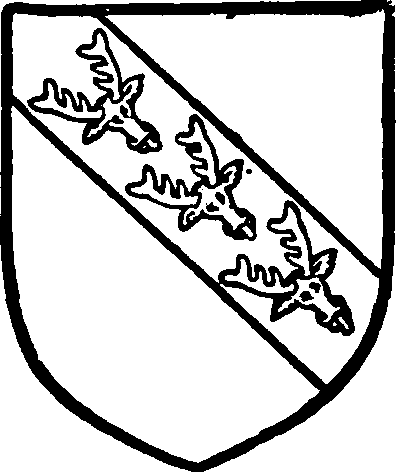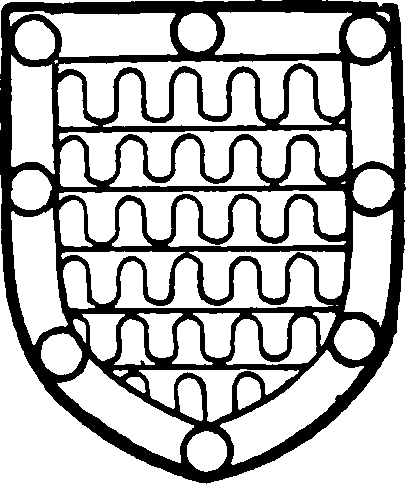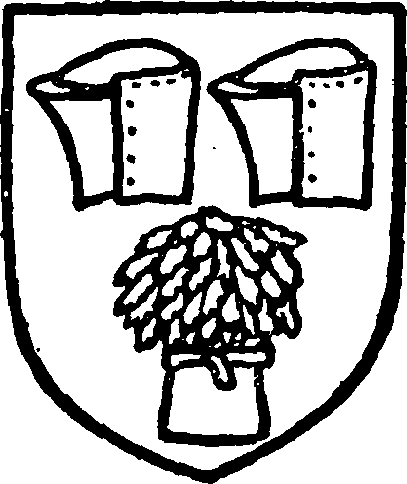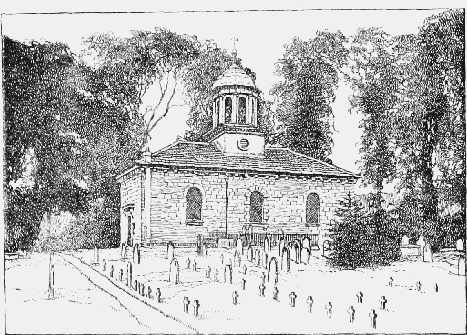A History of the County of York North Riding: Volume 2. Originally published by Victoria County History, London, 1923.
This free content was digitised by double rekeying. All rights reserved.
'Parishes: Brandsby with Stearsby', in A History of the County of York North Riding: Volume 2, ed. William Page (London, 1923), British History Online https://prod.british-history.ac.uk/vch/yorks/north/vol2/pp103-107 [accessed 1 February 2025].
'Parishes: Brandsby with Stearsby', in A History of the County of York North Riding: Volume 2. Edited by William Page (London, 1923), British History Online, accessed February 1, 2025, https://prod.british-history.ac.uk/vch/yorks/north/vol2/pp103-107.
"Parishes: Brandsby with Stearsby". A History of the County of York North Riding: Volume 2. Ed. William Page (London, 1923), British History Online. Web. 1 February 2025. https://prod.british-history.ac.uk/vch/yorks/north/vol2/pp103-107.
In this section
BRANDSBY-WITH-STEARSBY
Branzbi (xi cent.); Brandesby (xii–xvi cent.); Estiresbi (xi cent.).
Brandsby-with-Stearsby is a parish about 3,000 acres in extent on the wooded slopes of the low Howardian Hills, 12 miles north of York. The whole parish slopes down towards the south from a height of 525 ft. above the ordnance datum to some 300 ft. lower.
On the west it is separated from the neighbouring parish of Crayke by a little stream called Brandsby Beck, which flows down the wooded valley of Brandsby Dale through the Dale Pond, and further south works the water-mill which has been among the possessions of the lords of the manor of Brandsby since the 16th century at least. (fn. 1) On the north and east the boundary line follows for some distance another beck which flows through the Maidensworth Wood. It then turns southward through woodland called Stearsby Hag, and runs through the middle of the little hamlet of Foulrice, which thus belongs half to Brandsby parish and half to Whenby, the neighbouring parish on the east. The southern boundary runs just south of a small plantation called Spellar Wood to meet the Brandsby Beck at the south-west corner of the parish.
To the south-east of Dale Wood is a stretch of moorland called the Black Moor, where there is the track of an old race-course. South of it is another wooded hill called High Wood, from which the ground slopes rapidly downward to the church.
Brandsby is a somewhat scattered village situated on a heavily timbered hill-side. There are numerous signs of recent expansion and advance in the village and several large houses have been built in the neighbourhood within recent years. The church lies a short distance to the east, and near it is Brandsby Hall, the seat of the Cholmeley family. The house was built by Francis Cholmeley on the site of an older house in 1767 from designs by Thomas Atkinson of York, the architect of Hackness Hall, who designed the church at the same time. It is a square stonefaced building with numerous windows symmetrically placed in each face and giving it a bald and uninteresting appearance. On the opposite side of the road stands the rectory-house, an interesting building of two dates. The original house, dating from the early part of the 16th century, is a long, low structure parallel to the road. The front is two stories high and lighted by mullioned windows with rounded heads to each light. The ground floor windows have three and the first floor two lights each. Near the centre of the front is the original doorway, now blocked up, and at the back the tiled roof is brought down to the level of the first floor. The walls are built of rubble and the interior retains no features of interest, being now largely used for offices. At the east end of the old house a substantial stone building was added in 1809 by the then rector; this now contains the chief living rooms.
At the back of the Hall on its north side runs the road which connects the three groups of houses in the parish, the group near the mill on the western boundary, the Hall and the buildings near it, and the hamlet of Stearsby, nearly a mile to the east. Opposite the Hall, on the other side of this road, which is called the 'Town Street,' is the church. The main road from Stillington to Gilling runs northward through the parish near its western boundary. It meets Brandsby Beck in the neighbourhood of a farm called Seaves, in the south-west corner of the parish. Brandsby Lodge, the residence of Mrs. Carr, lies west of the Black Moor.
There are several old quarries and gravel-pits on the hill-sides. Thomas Cholmeley, lord of Brandsby, spoke at the beginning of the 18th century of his 'slate-pits within the warren of Brandsby,' (fn. 2) by which he must have meant the now disused quarries in Brandsby Dale. He mentioned at the same time 'a piece of woody ground called Anmett,' (fn. 3) a curious name which has now disappeared. 'Henry the hermit of Brandsby' is mentioned in the 13th century as witnessing a charter of Roger Prior of Newburgh. (fn. 4)
The soil of the parish is sand and gravel on a subsoil of Middle and Upper Lias and Inferior Oolite; 1,172 acres are under cultivation, and wheat, barley, oats, beans, seeds, potatoes and turnips are the principal crops. A rather larger area is devoted to pasture. (fn. 5)
An inclosure award for Brandsby Dale and Common was made in 1859. (fn. 6)
The Roman Catholic chapel attached to Brandsby Hall is served from Ampleforth.

Stanley, Earl of Derby. Argent a bend azure with three harts' heads caboshed or thereon.
Manors
BRANDSBY was before the Norman Conquest in the hands of Cnut, who held there and in Stearsby a 'manor,' with 11 carucates of land. These in 1086 were held by Hugh son of Baldric. (fn. 7) It is generally supposed that Hugh son of Baldric forfeited his lands by taking part in the rebellion of 1106. (fn. 8) Some of them, including Brandsby, were then granted to Niel Daubeney, whose heirs, the Mowbray family, continued to hold the overlordship here. It followed the descent of their manor of Thirsk (fn. 9) (q.v.) and came with that manor into the possession of the Earls of Derby.
From an early date Brandsby was held of the Mowbrays by the family of de la River. The pedigree of the Yorkshire branch of this family is not very well established in its early stages, but they seem to have been lords of Brandsby from the 12th century. In 1166 Walter de la River was holding a knight's fee in Yorkshire of Roger de Mowbray, (fn. 10) and Henry son of Walter de la River gave 4 oxgangs of land in Brandsby to Newburgh Priory. (fn. 11)

De la River. Vair and a border gules bezanty.
In the reign of Henry III Richard de la River held a fee of Niel de Mowbray 'in Brandsby and elsewhere,' (fn. 12) and made a grant to the Abbot and monks of St. Mary of Byland, (fn. 13) which was afterwards confirmed by his son Richard, a minor at the time of his father's death. (fn. 14) His successor was Nicholas de la River, (fn. 15) who in 1284 held a knight's fee in Brandsby of Roger de Mowbray. (fn. 16) Thomas de la River was the next lord of the manor. His name first appears in 1298, when William de Roos obtained a commission of oyer and terminer against him on a charge of breaking his park in Storthwaite. (fn. 17) He was lord of the manor in 1301, (fn. 18) and it was probably he whom the king removed in 1315 from the post of verderer in the forest of Galtres 'for insufficient qualification.' (fn. 19) A William de la River of Brandsby is mentioned in 1322, (fn. 20) but, as Thomas de la River and his wife Joan were living in the same year (fn. 21) and in 1326, (fn. 22) William can hardly have been lord of the manor. In 1352 John son of Thomas de la River was in possession of Brandsby. (fn. 23) He still held it in 1383 (fn. 24) and died in or about 1386. (fn. 25) His heir was Marmaduke son and heir of his son William and a minor in 1388. (fn. 26) The manor had been settled on him by his grandfather. (fn. 27) Marmaduke was succeeded by his son Thomas, (fn. 28) who died in 1451, leaving directions that his body should be buried in the parish church of Brandsby. (fn. 29) He mentioned in his will his son Richard, but not his eldest son Marmaduke, who succeeded. (fn. 30) Marmaduke died in 1484, and was succeeded by his son Thomas, a minor. Sir Thomas Mauleverer, kt., had the issues of the manor for four and a half years after the death of Marmaduke, claiming that the latter had executed a deed of feoffment to him and his heirs until Thomas should be of age. This claim was disallowed in 1490. (fn. 31)
Thomas de la River had a son and heir Thomas, on whose son Walter he settled the manor of Brandsby in 1527. (fn. 32) Thomas, the father of Walter, however, came into possession, and the latter laid violent claim to his rights. Thomas complained that Walter and others entered upon his land, broke the windows of his cottages 'and such poore Implements and household stuf as the said poore tenants had in the said houses . . . the said ryotous persons in most vyolent manner dyd cast out of the said houses uppon the Donge hepe and other vyle places.' (fn. 33) Walter denied the violent entry and pleaded the settlement, (fn. 34) but it seems never to have been executed.

Cholmeley. Gules two helms argent in the chief and a sheaf or in the foot.
In 1557 Thomas de la River the younger made a new settlement of the estates. He had four illegitimate daughters, Jane, Thomasina, Eleanor, and Elizabeth. (fn. 35) Of these Jane was married to Roger Cholmeley, Thomasina to his brother Richard, and Elizabeth to Francis Thynne. (fn. 36) The settlement of 1557 provided that the manors of Brandsby and Stearsby should remain to Thomas for his life, and after his death should pass to Roger Cholmeley and his wife Jane and their heirs; failing such heirs to Thomasina, Eleanor and Elizabeth. A further succession was elaborated in the event of all these heirs dying without issue. (fn. 37) Thomas de la River died in 1558, (fn. 38) and Roger Cholmeley and his wife Jane succeeded to the manors, (fn. 39) which have remained ever since in the possession of their family. Their heir was their son Marmaduke, (fn. 40) who died in 1602 and was succeeded by his brother Richard. (fn. 41) At the beginning of the 17th century the family appears in all the returns of recusants for Yorkshire, and seems to have been more active than most recusant families in observing the rites of the Roman Catholic religion. Richard Cholmeley and his sister-in-law Mrs. Ursula Cholmeley, widow of Marmaduke, were both presented for recusancy in 1604, and it was reported that 'many straing persons repaire to the house of Mrs. Urseley Cholmeley which come not to the churche, and there hath been seminaryes kept in her house'; while Richard Cholmeley had contracted a secret marriage with Mary Hungate 'in a fell with a Popish priest.' (fn. 42)
Richard was succeeded in 1624 by his brother Thomas, (fn. 43) whose lands were forfeited for recusancy in 1627. (fn. 44) They must have been regranted to him, however, for his son Marmaduke (fn. 45) compounded for the manor of Brandsby in 1653. (fn. 46) In 1717 Marmaduke's grandson (fn. 47) Thomas Cholmeley made a return of his lands, from which it appears that the old service from tenants of 'one boon day at the hay, one at harvest,' still lingered in Brandsby at that date. (fn. 48)
His eldest son and heir was Thomas Cholmeley, (fn. 49) who was succeeded by his brother Francis in 1742. (fn. 50) Francis died in 1780, when his son Francis Cholmeley succeeded to the manor. (fn. 51) He was followed in 1808 by another Francis, who married Barbara Darell and had three sons. (fn. 52) The first, Francis, died one year after his father in 1855, (fn. 53) and his brother Henry Philip in the next year. (fn. 54) The son of the latter, Francis Henry Cholmeley, next succeeded and died in 1876. (fn. 55) The manor then passed to his uncle Thomas Charles, who assumed the prefix of Fairfax by royal licence in 1886. (fn. 56) At his death in 1889 it came to his son, the present owner, Mr. Hugh Charles Fairfax Cholmeley.
The Abbot and monks of St. Mary, Byland, had free passage through the wood of Brandsby to Scackleton. (fn. 57) Henry de la River granted land here to the Prior of Newburgh, (fn. 58) which was confirmed to him in 1389. (fn. 59)
A grant of free warren in his demesne lands at Brandsby was made by Edward I to Thomas de la River in 1304. (fn. 60)
The first mention of a water-mill at Brandsby occurs in the 16th century. (fn. 61) From that time it followed throughout the descent of the manor. (fn. 62)
STEARSBY (Estiresbi, xi cent.) followed the descent of Brandsby continuously (fn. 63); in fact, it is probable that the two formed one manor throughout their history, as they did at the time of the Domesday Survey. (fn. 64)
A family bearing the name of the place held land here of the de la Rivers in the reigns of Henry III and Edward I. (fn. 65)
A messuage in Stearsby which had belonged to Marton Priory was leased to Thomas de la River in 1539–40, (fn. 66) and was possibly granted to him later on in fee.
Land in Stearsby was granted to St. Mary's Abbey, York, by Robert de Birdsall, and the grant was confirmed by Richard I and Edward II. (fn. 67)

Brandsby Church from the South-west
The hamlet of FOULRICE (Fulryse, xiv cent.; Fowlrize, xvii cent.) was held in 1301 by Elizabeth Tyes, (fn. 68) probably a tenant of the de la Rivers. It appears among the lands of the Cholmeley family in the 17th century, when it was called Fowlrize hamlet. (fn. 69) In Thomas Cholmeley's return of his estates in 1719 it is described as a manor, (fn. 70) but it can hardly have been so in reality. It seems to have followed the descent of Brandsby Manor. (fn. 71)
Church
The mediaeval church of ALL SAINTS of Brandsby appears to have stood on a part of the site now occupied by the Hall, but the old building was pulled down about the year 1767, when the present structure, bearing the same dedication, was begun by Francis Cholmeley. (fn. 72) During the period of the rebuilding, which apparently lasted from 1767 to 1770, the parishioners registered at Dalby. The new church is an unusually pleasing and original example of English Renaissance, following rather the traditions of the school of Wren than the contemporary style of design. The building is a simple rectangular structure of stone, the long sides to the north and south pierced with round-headed window openings, three rusticated and two plain. The east window has three lights and the door, at the west end, a plain cornice above it. The walls are finished with a deep stone cornice, with the hipped roof brought out to the edge. The stone slabs of the latter are pinned on with mutton bones. Across the centre of the church is carried a double arcade of three semicircular arches resting on Doric columns, the space between being covered with a groined plaster vault and producing an effect equally unusual and attractive. These arcades support an octagonal stone lantern on a square base, which rises from the centre of the roof. The octagonal portion has an arched opening in each face with Doric halfcolumns at the angles, and is covered with a small dome, which bears the inscription: 'This church built Anno Domini 1767 by Francis Cholmeley Esqre, Thomas Atkinson, Architect. Richard Scurr, Mason.' The font is an urnshaped vessel, resting on a short column, and fixed in the south wall is a carved mediaeval crucifix in stone, found in the churchyard. At the west end of the church is a small gallery.
The bells, two in number, hang in the lantern and are inscribed (1) 'Gloria in Altissimis Deo 1669'; (2) 'Campana Beate Marie Virginis,' without date, but apparently mediaeval.
The plate of the church consists of the following pieces: a large cup (London, 1625) inscribed 'Ex dono Gulielmi Berman nuper Rector parochiae de Bransby anno 1665,' a paten (same date and maker) inscribed W. B., a cup (London, 1772) inscribed 'Bransby Church,' a paten (London, 1839) and a flagon (London, 1868).
The registers before 1812 are as follows: (i) mixed entries 1575 to 1670; (ii) mixed entries 1665 to 1808, marriages to 1753 only; (iii) marriages 1754 to 1812; (iv) baptisms and burials 1809 to 1812.
Advowson
There was a church with a priest at Brandsby in the time of the Domesday Survey. (fn. 73) It was found in the 13th century to be endowed with 1 carucate of land in the vill. (fn. 74)
The right of patronage has always been in the hands of the lords of the manor. (fn. 75) In 1278, when Richard de la River, the heir, was a minor, his mother Aubrey had the right of presentation on every third occasion as part of her dower. The other two presentations were made by Maud de Mowbray in right of her overlordship. (fn. 76)
The living is a rectory, but it was once usual at least in the 13th century for the rector to leave a vicar in possession, taking as his share of the proceeds a pension of 100s. a year. (fn. 77) Thus we find Richard de la River in 1227 presenting a kinsman to the rectory, or rather to the pension, for the vicar was left in charge. (fn. 78)
The advowson has been rented at various times from the Cholmeley family. (fn. 79) Sir Thomas Belasyse in 1621, (fn. 80) Henry Beane in 1682, (fn. 81) Leonard Thompson in 1733, (fn. 82) Thomas Lumley in 1765, (fn. 83) and Thomas Smith in 1806 (fn. 84) have presented to the living, and it is at present in the gift of the trustees of the late Mr. B. Wimbush.
Charities
Lawrence Littlefair left 40s. per annum for the poor, to be paid at Christmas out of a close called 'The Poor's Close,' now the property of Mr. Hugh Charles Fairfax Cholmeley.
Anthony Hardwick, by will, 1600, left £40 and William Hebden, by will, 1699, left £20 for the poor, the income to be given to them every Good Friday 'while the world endured'; the two sums of £40 and £20 with £60 added, being benefactions by a Mrs. Rawdon and by Edward and Mary Belwood, are now represented by £154 16s. 11d. consols.
Samuel Wiley, by deed, 1874, settled a sum of £109 11s. 9d. consols with the official trustees, for the benefit of the poor. The sums of stock are held by the official trustees, and the dividends, amounting together to £4 12s. 6d., were in 1904 divided in money among ten poor persons.
